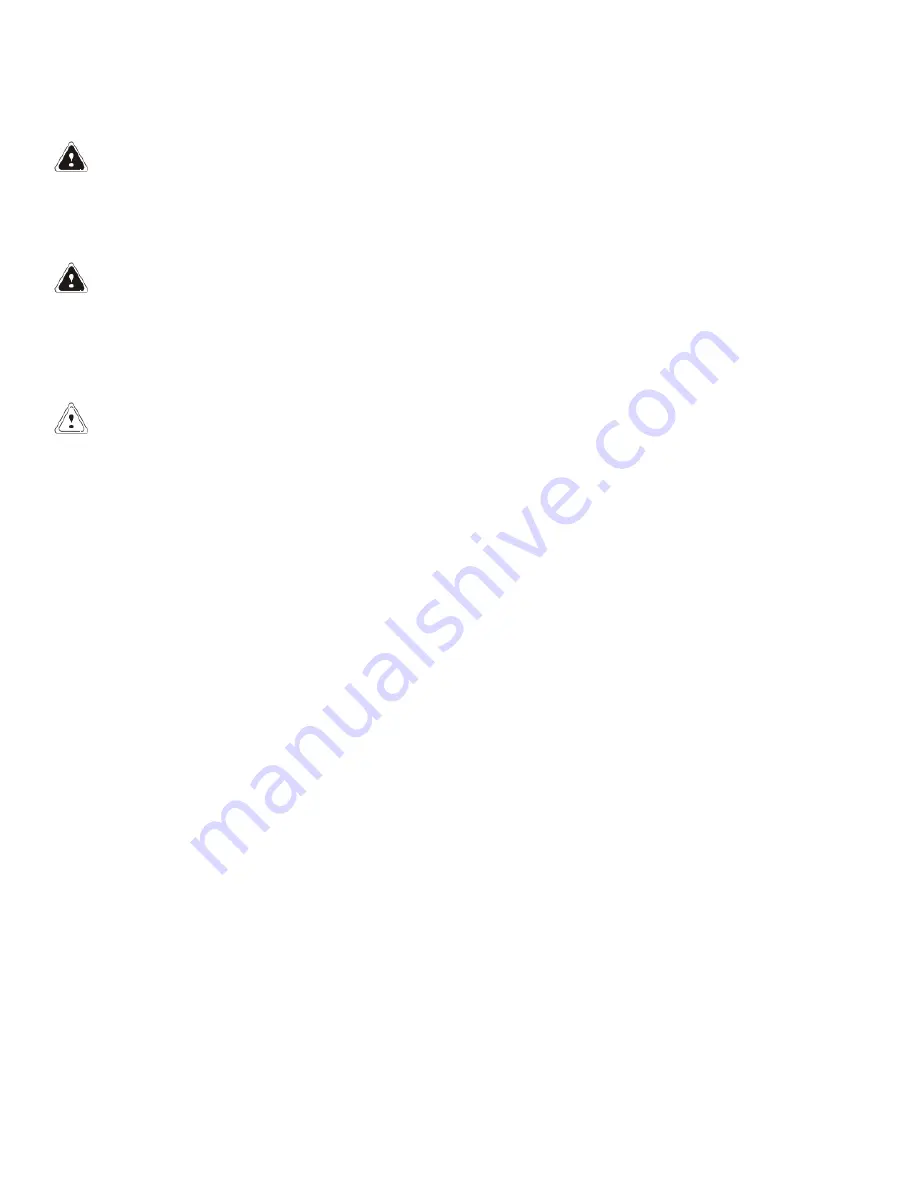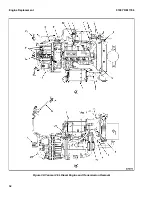
Chemical Solution Method of Cleaning
WARNING
When cleaning the tank, do not use solutions that
make dangerous gases at normal temperatures or
when heated. Wear eye and face protection. Pro-
tect the body from burns.
WARNING
Compressed air can move particles so that they
cause injury to the user or to other personnel.
Make sure that the path of the compressed air is
away from all personnel. Wear protective goggles
or a face shield to prevent injury to the eyes.
CAUTION
Disposal of lubricants, fluids, and chemicals must
meet local environmental regulations.
If the tank cannot be cleaned with steam, use the fol-
lowing procedure:
1.
Mix a solution of water and trisodium phosphate
or a cleaning compound with an alkaline base.
Follow the instructions given by the manufacturer.
2.
Fill the tank with the cleaning solution. Use com-
pressed air to mix the solution in the tank.
3.
Drain the tank. Flush the inside of the tank with
hot (boiling) water. Make sure all the cleaning
compound is removed.
4.
Make an inspection of the inside of the tank. If the
tank is not clean, repeat Step 1 through Step 3.
Make another inspection of the tank. When mak-
ing inspections, use a light that is approved for lo-
cations with flammable vapors.
5.
Check the tank for flammable vapors using spe-
cial indicator for gas vapors. If the amount of flam-
mable vapors is not below the lower flammable
limit, repeat the cleaning procedures.
ADDITIONAL PREPARATIONS FOR
REPAIR
If nitrogen gas or carbon dioxide gas is available, pre-
pare the tank for welding using these gases. See the
manual
Safe Practices for Welding and Cutting Con-
tainers That Have Held Combustibles
by the Ameri-
can Welding Society, F4.1 - 1999. If these gases are
not available, another method using water can be
used as follows:
1.
Fill the tank with water to just below the point
where the work will be done. Make sure the space
above the level of the water has a vent.
2.
Use acceptable welding practices to repair the
tank. See the American National Standard
Safety
in Welding and Cutting,
AWS Z 49.1 - 1999.
SMALL LEAKS, REPAIR
Use the following procedure to repair small leaks:
1.
Use steam to clean the area around the leak. Re-
move all paint and dirt around the leak.
2.
Apply Loctite
®
290 to the leak. Follow the instruc-
tions of the manufacturer.
LARGE LEAKS, REPAIR
1.
Use one of the procedures described under Clean
to clean and prepare the tank for repairs.
2.
Contact your dealer for lift trucks for welding in-
structions.
3.
Use acceptable welding practices to repair the
tank. See the American National Standard
Safety
in Welding and Cutting,
AWS Z 49.1 - 1999.
PREPARATIONS FOR USE AFTER
REPAIR
1.
Add more water to the tank so that the water goes
above the point of where the work was done.
Check to see if there are any leaks coming from
tank.
2.
If there are no leaks coming from the tank, re-
move all the water from the tank.
Tank Repair
0100 YRM 1766
46

































